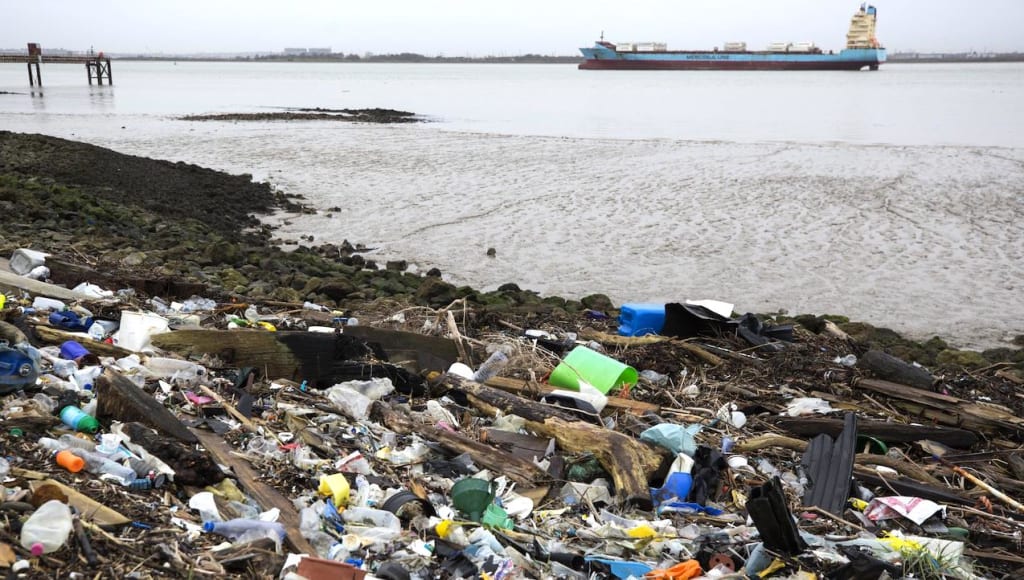The Thames Is Severely Polluted With Plastic
Plastic pollution in the River Thames is reaching record-high levels, and things could get much worse.

London's River Thames is full of secrets: home to human teeth, deadly Amazonian Piranha, and "hyperactive" eels predisposed to swimming in high cocaine concentrations.
But are those somebody's gnashers snarling from below Tower Bridge — or bottle caps? Tight on its belt, the Thames exposes its most deadly horrors. It isn't easy to miss.
The second-largest river in the United Kingdom has a massive plastic problem, documented by a new report.
Researchers noted that the London River has some of the world's highest confirmed plastic particles rates, which makes the Thames one of the worst plastic-polluted rivers on Earth.
The new research, carried out by Royal Holloway University of London, with the association of the Natural History Museum together with the Zoological Society of London, discovered that in some areas along the 346km river, up to 94,000 micro-plastics flow down the Thames every second.
Here, nobody has ever looked at the River Thames in their right state of mind and ever thought it was clean, but even so, this is a breathtaking discovery.
Ninety-four thousand micro-plastics per second is a rate that places the Thames at a higher plastic pollution level than the Danube, the Rhine, and the Chicago River, and just behind the levels of the Yangtze River in China.
Researchers assessed microplastic volumes at two locations along the Thames river's inner London stretch – one at Putney, and the other at Greenwich. Microplastic levels detected comparable with the highest in the world. 24.8 per cubic metre of water in Putney, and 14.2 in Greenwich. And the amount for Greenwich is just lower, since the Thames is much wider downstream.
Common plastic culprits included particles of larger objects, such as food packaging, glitter, and micro-beads from cosmetic products, despite the 2018 ban.
As you would expect, the environmental consequences of this are catastrophic. Micro-plastics were found in the stomachs of at least nine species of fish that live in the Thames, and river crabs have swallowed plastic that reached the Thames (and that's before you even mention London's cocaine-addled eels).
Given the explosion in manufacturing and consumption of personal protective equipment (PPE) to prevent the spread of COVID-19, the study authors have warned that the problem could get even worse.
Food packaging looks to be a significant culprit; the study discovered that almost 94% of micro-plastics in their samples came from film lids and bits (the sort you find on your ready meals). However, glitter, microbeads from cosmetics, and microplastic particles from larger items were also found in abundance. At the same time, researchers noted that flushed wet wipes have also been piling up along the shoreline.
For all Londoners, the findings represent a disturbing scene, a definite wake-up call that green and sustainable living has to become an immediate priority.
Although the study acknowledged that the Thames is cleaner now than it was in the past, as a result of fewer trace of metals in the water, micro-plastics have become the greatest threat to the health of our river and marine ecosystems across the globe.
Worse still, this level of waste is likely to escalate as a result of the pandemic, with large volumes of PPE and masks requiring responsible disposal, and often not getting it.
Through projects such as the Thames Tideway (which instals a super sewer under the Thames to help clean it up) working towards a healthier river, it is up to us as Londoners to do everything we can to prevent plastics from blocking the Thames.
And also, it's not a concern limited to the Thames. Indeed, Greenpeace, international non-profit organisation, found plastic in every river they tested in Britain. Moreover, the Mersey River in northwest England had proportionally more plastic than the Great Pacific Garbage Patch — the world's most polluted water patch, three times the size of France.
Scientists know that people ingest micro-plastics but are not yet sure that they are dangerous to humans health. For now, researchers are urging the government to enforce stricter regulations on the disposal of plastic to protect the river's wildlife.
Plastic pollution is everyone's problem. We all have to play our part.
About the Creator
Anton Black
I write about politics, society and the city where I live: London in the UK.






Comments
There are no comments for this story
Be the first to respond and start the conversation.